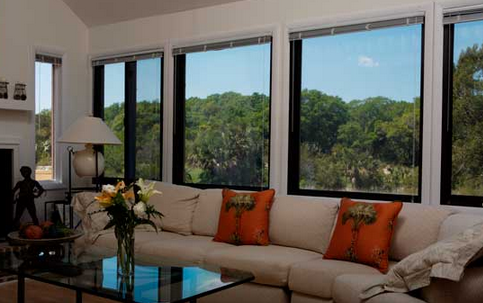Window Tint & Aesthetics
Written By Joe Bockheim
Let’s talk ‘Tint’…
.
Generally speaking, when people hear the word “tint” they think of glass that is considerably darker than clear glass. The reality is there are window films available that are so clear you’d never know they are there down to so dark you can hardly see through them and everything in-between. So how do you know which aesthetic of film is best for you? We asked our sales account manager, Joe Bockheim, to give us his best advice for choosing the right aesthetic of tint for your home or office. Check out his professional opinion below…
The phrase “the customer is always right” applies perfectly to this topic and is the rule of thumb when I’m on a consultation with a customer reviewing window film options. That is to say that ultimately the customer should really choose the aesthetic themselves. I will help guide them towards the right films that will do the best job solving their concerns (fading, privacy, heat, etc…), but the customer should make the choice on aesthetics.
Shade
Now that I have given the most generic answer out there, try to hear me out as we talk the first element of tint aesthetics, shade. I’ve had customers tell me that a virtually-clear 70 shade (30% tinted) is way too dark and other customers tell me that a 15 shade (85% tinted) isn’t nearly dark enough. Perception is reality, so neither of those clients were wrong. So first, I would encourage you to start here. What shade or tint level do you consider dark, and what level are you comfortable living with?
Tones
Once a client has a good idea about which level of tint is best for them, they need to consider the tone of the film. Most films fall into one of three tone categories; warm, cool, or neutral. Warm tends to be more of a brown-ish hue, cool is more of a blue and neutral is somewhere in-between. This is a matter of taste, so I try to avoid answering ‘what do you like?’ or ‘what do most people choose?’ because it’s not about my taste or that of other customers….it’s about what looks good to your eyes.
Reflection
The last key aesthetic element is the amount of reflectivity. Films range from completely non-reflective to one-way mirror glass and, again, pretty much everything in-between. In my experience, the reflective appearance of film is either a love it or hate it. Customers seem to either enjoy the look and privacy that some reflectivity offers, or prefer the film does its job without changing the look of the glass much at all.
I love the aesthetics topic and if we’re at a consultation together, I’ll walk you through all of this based on what you are telling me you want and need. It feels complicated but it’s painless and I leave the samples behind so you can “live” with them for a bit just to make sure.
More Posts
We are on Wood 106.9 FM & 1300 AM
Are you looking to learn more about residential and commercial window films? Are you experiencing heat, glare, and fading in your home or office?...

